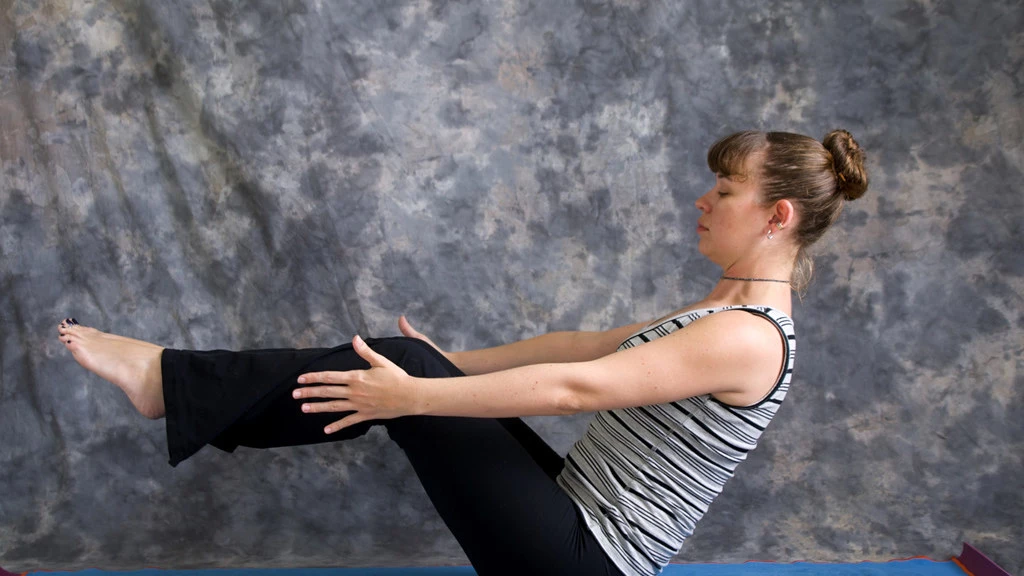Yoga Postures for Core Strength Great Bet for Back Pain Relief

Core strength is one of the most commonly used fitness buzzwords. You can’t open a magazine or turn to an exercise channel on TV without someone talking about “the core,” “core strength,” and “core stabilization.” Core strengthening has received a lot of well-deserved attention, and not just in the fitness community. Having a strong, well-integrated core is important not just for proper alignment in yoga postures, it is a key component in keeping the back and spine healthy and to maintain a good posture throughout life.
The core muscles are the support system for the spine. They create a reinforcing framework to counteract the pull of gravity and keep the body balanced and integrated during movement. Having a strong and balanced core is a key to preventing injuries and back problems. In many cases, strengthening the core can also help heal long-standing back problems. Think of the core muscles as the structural foundation that supports your body, just like the structural frame that upholds a building. The stronger the core, the better your posture.
To create greater structural balance and prevent back pain, you must strengthen the core muscles. Due to the progressive loss of muscle mass as we get older, the core muscles naturally weaken and diminish over time. Without a strong core to help support the spine, the body gives in to the pull of gravity and over time begins to ‘hang’ on the spine, much as you can see in the picture on the right. This puts extra weight on the spinal vertebrae and the muscles of the back, often resulting in chronic muscle tension (read: back pain) and degenerative disc disease. Poor core strength also slowly undermines your posture. So, core work is important, not just to keep the back strong and healthy, but to maintain a good posture all through life.
Most people, when they hear the word core strengthening, automatically think of crunches. Most people also hate crunches; we do too. But here’s news for you: core strengthening doesn’t have to involve crunches. In fact, crunches are not even the best way to strengthen the core muscles. Crunches are repetitive movement, which is great for rapid-firing, phasic muscles. However, the deeper core muscles are what are known as postural muscles, i.e. they contain mostly slow-twitch muscle fibers and are best suited for sustained work over long periods of time, not quick, fast, repetitive muscle contraction.
From the perspective of yoga therapy, having a strong core affects more than your posture and the health of your back. Our core is the center of our physical balance and strength. It is also linked to our emotional and spiritual life. A strong core supports us physically and emotionally; it aligns us with our inner center of balance and power. It gives us the stamina and resilience to deal with the ups and downs of life. Energetically, a strong core helps connect us with our sense of purpose in life. It creates determination, perseverance, and the will to succeed. By strengthening and enlivening our core muscles, we connect this foundational part of our being to our health, vitality, and well-being.
In the framework of using yoga to relieve back pain, developing true core strength is a holistic process. It not only involves strengthening all the muscles of the core; it also entails training them to function together in an intelligent, coherent way. Yoga therapy postures for back pain and core strengthening will help work your core in a balanced and holistic way in order to help you achieve the kind of complete mind-body integration that true core work can create. Core work should never feel like a strain.
Which are the best yoga postures for strengthening the core? Almost all types of yoga postures, particularly the standing yoga poses, strengthen the core in one way or other. However, it’s important to do the poses with correct alignment, as the strain of improper alignment will only reinforce existing tension patterns in the body. So initially, take yoga classes until you develop a ‘feel’ for the correct alignment in yoga postures. In addition, if you suffer from back pain, work with someone trained in yoga therapy or yoga for back pain or a yoga teacher experienced with working with people with back pain issues. He or she can help pick out the poses most suited for your particular back problems and, just as importantly, a trained yoga therapist will be able to show you how to modify the poses to make them safe for your condition.
One of our favorite yoga postures for improving core strength, improving posture, and lay the foundation for long-term back health is also the simplest: Tadasana, or Mountain Pose. For an introduction to Tadasana (Mountain Pose), see the description here.




